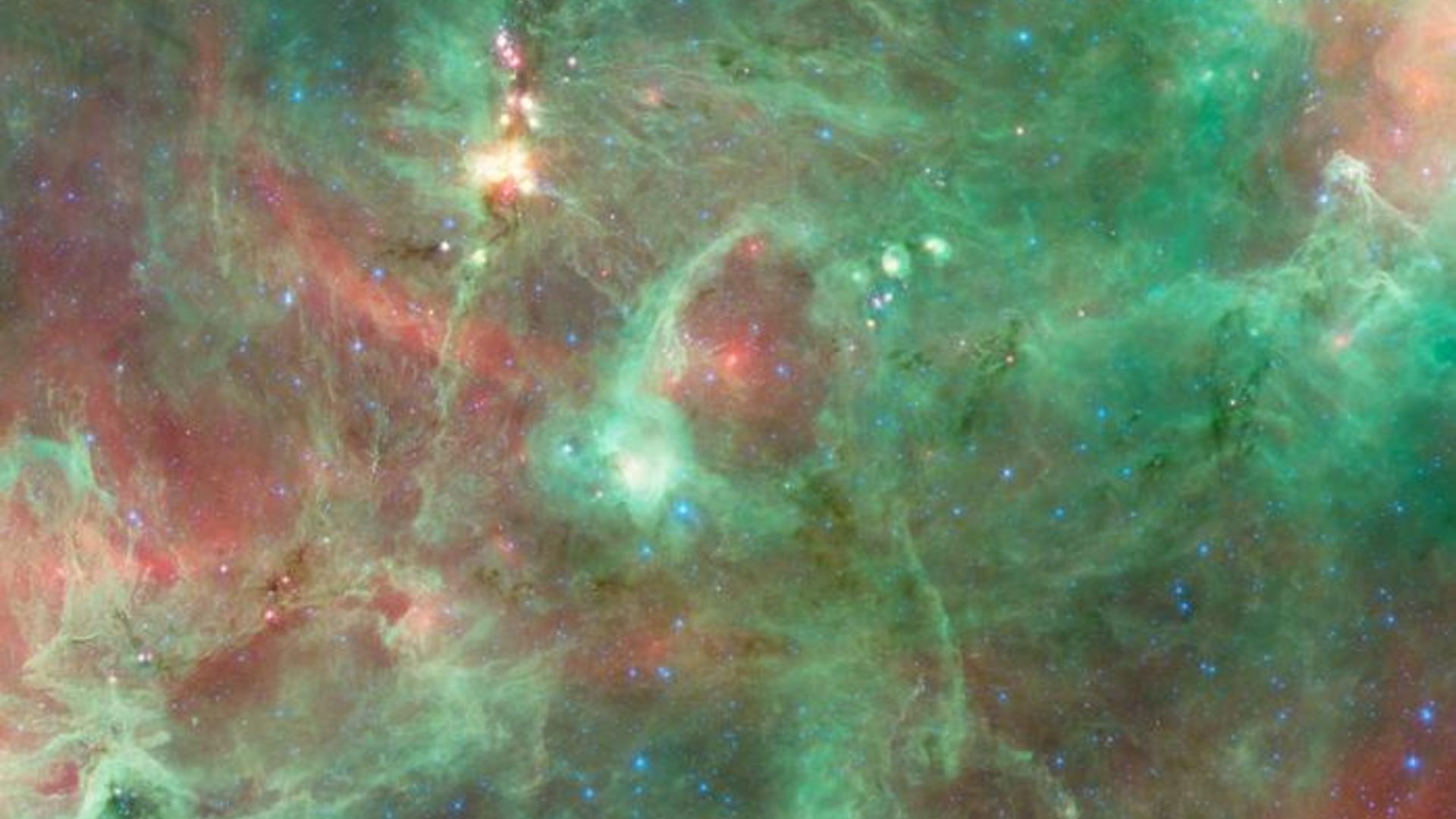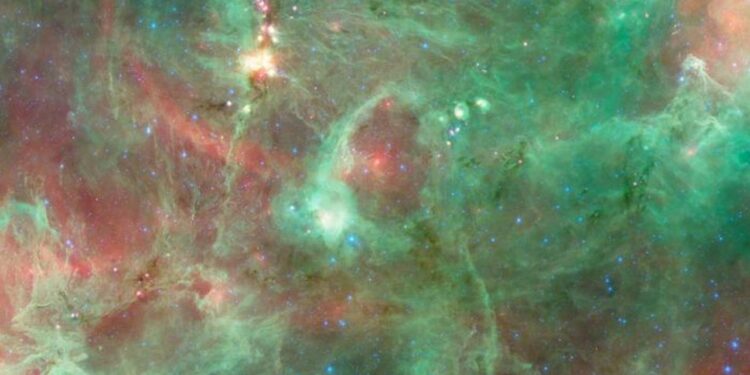
A distant, mysterious glowing ring of gas and dust has finally given up its secrets — and it turns out to be less of a romantic cosmic jewel than its shimmering appearance suggests.
In the constellation Cygnus, a bright knot of stars seems to adorn one edge of a nearly perfect 20-light-year-wide circle, earning the structure the nickname “Diamond Ring.” But astronomers studying its picturesque appearance say the luminous “diamond” isn’t part of the ring at all. Instead, it’s an unrelated cluster of young stars located a few hundred light-years closer to Earth that happens to lie along the same line of sight.
“All that remained was the particular flat shape,” Dannhauer said in a statement. “For the first time, we observed the final stage of such a gas bubble in a distinctly flat cloud structure.”
Most bubbles carved by massive stars expand more or less spherically, showing red- and blue-shifted gas in telescope observations that signal their 3D shapes. But recent observations of the “Diamond Ring” from the now-retired SOFIA airborne observatory lacked those telltale signatures, instead revealing only a thin, tilted ring of gas expanding significantly more slowly than similar structures, the new study reports.
When the researchers plugged those values into their simulations, they found the massive star likely formed not inside a typical thick, spherical cloud of gas, but within a thin, slab-like layer about six light-years thick. In such an environment, portions of the bubble pushing perpendicular to the slab would have quickly spilled into the lower-density regions above and below. Those parts of the shell dispersed rapidly, the researchers say, leaving behind only the broad, slow-moving ring confined by the swept-up gas within the plane of the slab dense enough to survive and remain visible today.
The simulations also suggest the ring is far younger than previous estimates put forth. Earlier calculations, which assumed a spherical expansion, placed its age at several million years. But the new study indicates the structure is only 400,000 to 500,000 years old, a stellar newborn in cosmic terms.
The bubble likely expanded in three dimensions for only the first 100,000 years or so before its top and bottom blew out and dissipated, effectively “bursting” and leaving behind the thin, pancake-like rim, the study notes.
The findings suggest that such slab-like star-forming environments may be far more common than the idealized, spherical gas clouds often used in models, researchers say.
“Such processes are crucial for understanding the formation of stars in our Milky Way,” study co-author Robert Simon of the University of Cologne said in the same statement.
A study about these results was published Monday (Nov. 17) in the journal Astronomy & Astrophysics.
